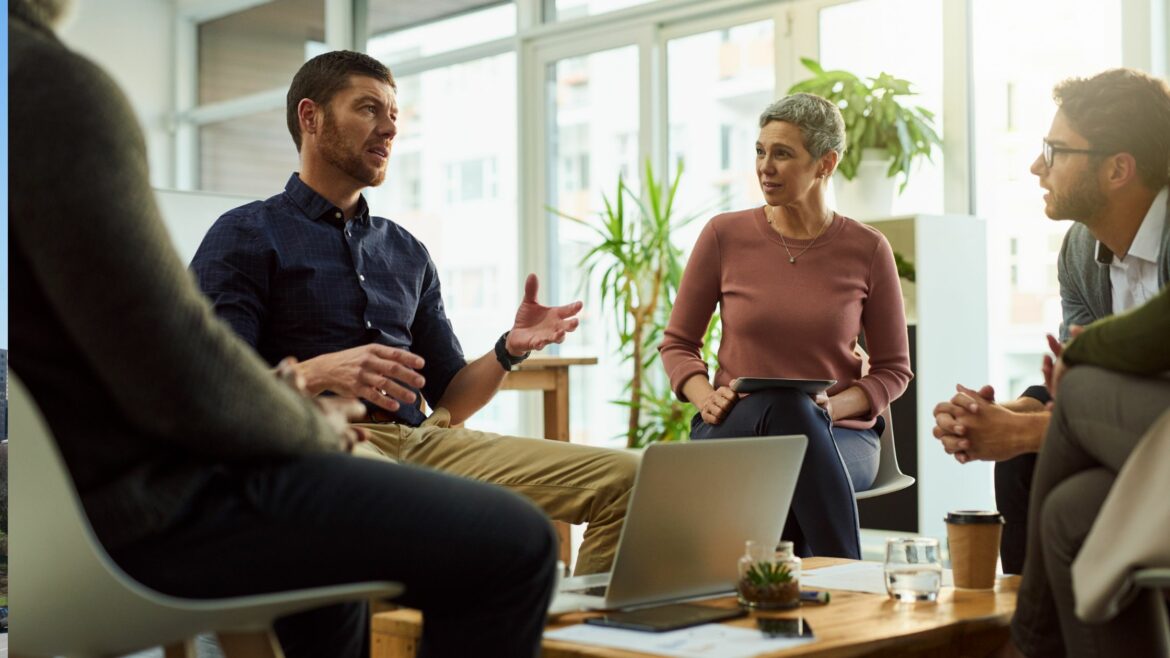Meet Alex, a young professional looking to become a web developer.
Alex is hard-working and driven, but he has a problem.
He has difficulty staying productive at work. He manages a multitude of projects, learns a lot of new things to stay updated in his industry, and manages all the everyday admin tasks like responding to emails and fixing bugs on websites of clients.
There’s also the never-ending stream of distractions, meetings, and office lunches he often has to attend. And not to mention the endless messages and requests for work revisions, new tasks from his bosses, and everyday office fires he has to put out.
How can Alex keep on top of productivity when he has to worry about his current workload, common office distractions, and new work and projects that come along?
We’re sure you, like most everyone, can relate to the struggle. After all, no one can really say work ever stops (or even slows down). Once one project is over, a new one has been waiting for you.
Given this, are there better ways to master your time and keep on top of things all at once?
We think so. Our recommendation? The 1-3-5 rule.
In this post, we explain what the current state of workplace productivity is like, as well as some common reasons that the average worker might be struggling with staying productive at work, regardless of their work situation.
Later on, we explain what the 1-3-5 rule is and how you can use it to be more productive at work while being less stressed.
The current state of workplace productivity and how it affects you
In a frequently cited study, the State of the Local Workplace released by Gallup, 85% of employees reported to be feeling disengaged at work, and the lost productivity resulting from this is costing businesses $7 trillion a year.
Indeed, anyone feeling disengaged at their job can get into several habits that make them misuse their time and be less productive at work. Here are some findings to illustrate common time wasters experienced by office employees:
- About 48% of employees waste work time by going on non-work related websites, including social media.
- Only 15% of businesses have a social media policy, so several other businesses are losing out when their employees spend working hours browsing the internet.
- Misusing email or continuously checking for new personal mail is yet another time-wasting habit that employees might form. Up to 70% of employees admitted to checking non-work-related emails during their working hours, with some checking their inbox multiple times a day.
- Other time wasters in the workplace include office chit-chat or socializing, unnecessary meetings, or meetings with unclear agendas, as well as taking longer lunch breaks and making personal calls.
But what does this have to do with personal productivity?
Look at the common time wasters one more time, and ask yourself this: do you find yourself checking social media, taking personal calls, or engaging in office chit-chat?
You probably already know that these are affecting the way you can do quality work for your job – and you might not be aware of it, but sometimes you engage in these behaviors out of procrastination.
When you do personal errands during your working hours, for example, you might feel as though you’re more productive, but you’re actually squandering your limited time to do real work that propels your projects forward.
So now, let’s move on to the simple – yet powerful – productivity rule that can help you not only keep away from workplace distractions but also help you master your time at work and stay sane.
What is the 1-3-5 rule?
The 1-3-5 rule is simple: in order to stay productive at work every day, you just need to commit to accomplishing 1 Major Task, 3 Medium Tasks, and 5 Small Tasks.
Because it covers tasks from major, medium, to small, you can be sure that you’re making progress on big projects and deliverables, down to everyday tasks, like admin work or repeating daily commitments.

The 1-3-5 Rule in action. Img Source: 135list.com
There are several other productivity measures you can implement in your life to make sure you’re making the most of your time and energy, but this simple way of redoing our to-do lists can be a powerful tool for getting things done.
This rule cannot be more straightforward, and it’s even easier to apply. Ready to see how to incorporate the 1-3-5 rule into your own life? Here’s exactly how to get started.
How to apply the 1-3-5 rule
List all your tasks for the week
At the beginning of each week, list down tasks you want to get done. These may be tasks that have spilled over from last week or are tasks you do on a regular basis.
You’ll also want to include a few urgent tasks that might come up that day, be it after a weekly team meeting or a new project or plan you’ve committed
And as you list your tasks, try to make them concrete and actionable. So recalling our friend Alex from the beginning of this post, he might put tasks like “Develop 3 new web pages for Client X” instead of “Client X deliverables.”
Additional tips to help implement this step:
- When you’re listing down tasks, just let everything flow out. Be okay with getting things out of your brain and onto paper. You’ll sort through it later.
- Keep a separate list for tasks to do this week versus tasks to do next week. As a general rule, whenever a new task or project comes up, jot it down immediately on your “Next Week” list.
- Doing this brain dumping exercise for all your tasks at the start of each week helps you clear out your head, giving you room to focus on one specific task at a time when it comes up – but more on that later. After all, it beats not having to worry about even remembering your to-dos. Writing them down on a list permits you to get that to-do out of your head for a while.
Group them into big Tasks, medium Tasks, and small tasks
Once you’ve sorted out the tasks you need to do for the week, you can start to categorize them. Make columns to rearrange each task, or simply label them right beside your list.
As a rule of thumb, you can consider a task a Major Task if it takes about 3-4 hours to complete. Medium Tasks can take about 1-2. And Small Tasks may take less than 30 minutes to an hour each.
And aside from time, consider too the effort involved for each task. Some tasks might take a while but are actually quite simple and no brainer.
In this case, you might consider it a small task instead of a medium task because the effort involved isn’t great. You could probably get such tasks done sooner if you schedule dedicated, distraction-free time for it.
Additional tips to help implement this step:
- Don’t become obsessed with the thought of grouping tasks perfectly. That will only waste more of your time – when in doubt, trust your gut.
- Pay attention to similar tasks and projects you’re doing and how much time they normally take you. Over time, you may realize that you overestimate and underestimate the effort involved for certain to-dos, so you can use these observations as reference for the next time you repeat this step.
- Look at the Small Tasks on your list and think for a moment if they really ought to be done by you. Can you delegate it or eliminate these tasks from your list?
Write your to-do list
Next, you can plot out all the tasks into a daily 1-3-5 to-do list. You have the option of planning this every day – either the night before or in the morning. Or you can create a 1-3-5 to-do list for the entire week well in advance.
To avoid the lure of other tasks, use a dedicated space to write down your 1-3-5 list instead of having a long laundry list of to-dos at your desk.
If other tasks come up suddenly, you can schedule them after you’ve completed your 1-3-5 list for the day – or schedule it for the next day or week as part of your 1-3-5 list.
Additional tips to help implement this step:
- Use apps that are programmed specifically for the 1-3-5 list so you have a fresh page that’s ready daily.
- If you already use a specific to-do list app, there may be ways to configure it to help you implement the 1-3-5 rule. For example, creating a daily list or group (named after each day of the week) for you to put in your Big Tasks, Medium Tasks, and Small Tasks is a simple way to organize your list.
- Use a new page of your notebook or planner each day to create your 1-3-5 list. It doesn’t have to be fancy. Just commit to getting your 1-3-5 tasks on paper and zoom in on them for the day.
Start with the biggest one first

Ludovic Rembert of Privacy Canada has this to say about prioritizing which tasks to do first: “Tackle the biggest task of the day. The biggest task is usually hardest to accomplish, so it’s best to get it out of the way so you can proceed to other things.”
Or as Mark Twain put it: eat that frog first thing in the morning.
Using this logic, start your workday by diving straight into your 1 Major Task. It works for a few reasons:
The first is that we typically have the most energy and least distractions. The latter might be explained by how everyone at your office is also busy tackling their work in the morning, so you’ll be less distracted by noisy or interrupting colleagues.
A second reason this works is that, once you’ve tackled your biggest task for the day, you get to fuel momentum to finish the rest of the items on your 1-3-5 list.
By refusing to delay the biggest task, you also lessen the risk of falling into anxious procrastination – where not only do you keep delaying your work, but you also get more and more anxious the more time passes without its completion.
Additional tips to help implement this step:
- You may want to skip out on early morning office chit chat and may want to get a head start on your Big Task for the day.
- Work on your Big Task in sizeable tasks, if needed. While it’s recommended to power through this task and get it done by working on it constantly, still if you feel like working a small task as a quick break, do so as long as it makes you feel ready to go back to your Big Task.
Incorporate the Pomodoro method

Sometimes it’s hard to stay focused on just one particular task at a time. It’s tempting to seek reprieve in the form of welcome distractions like answering a notification or indulging in workplace gossip.
To beat that cycle of falling into distractions and sticking to one task until it’s done, use the Pomodoro technique.
The Pomodoro technique is essentially a productivity tool to help you commit to doing focused work. You start by doing 25 minutes of work, followed by a 5-minute break. This makes up one Pomodoro. After about 4 Pomodoros, proceed to take a longer break of about 15-20 minutes.
This technique also supports what science has found as our ultradian rhythm – meaning the human brain can do about 90-120 minutes of focused work before experiencing a period of lower brain activity.
What does this mean for you? Take those breaks! But in order not to overindulge, the Pomodoro technique can easily keep you committed to small 25-minute chunks of working time.
Additional tips to help implement this step:
- Download free Pomodoro apps to install on your computer. Many of these apps are already programmed to help you count down your work time with Pomodoros. They also include recommended break times at the recommended lengths.
- If you do decide to use a Pomodoro app, customize it to suit your work style. Some people find that 25 minutes of focused work is too short for them. Adjust accordingly, or opt to skip short breaks and only take the long ones.
- Pay attention to how many Pomodoros it takes for you to typically complete one task. Recalling our tip from earlier, knowing how much time and effort you put into a task can help you more realistically estimate the time you need for similar future projects.
Practice the art of deep work

In his bestselling book Deep Work, Cal Newport writes about how we can do better work without distraction, especially in an era of social media, instant notifications, and entertainment on-demand.
Habits like checking notifications the moment they come on may have wreaked havoc on our ability to focus and do what Newport calls “deep work.” Luckily, the brain is a plastic thing and can be trained to learn good habits as quickly as it learned bad ones.
To practice deep work, one of the easiest things you can do is shut off notifications from messaging apps and social media sites. Implement other strategies that you know can help improve your focus, such as working without WiFi or eliminating noise.
Additional tips to help implement this step:
- Sometimes what keeps you from being able to do more deep work are unnecessary meetings. Practice speaking with co-workers about whether or not you really need to meet about something. Consider bringing up problematic meetings to your managers; they’ll appreciate your enthusiasm to keep office productivity high.
- If someone interrupts you in the middle of your deep work session, ask if they really need to speak to you at this moment or if it can wait until later.
- Alternatively, send a group message to your team and let them know you’ll be doing deep work and will be unavailable for the next hour or two. Request them to discuss your assignments within your company project management software instead of walking up to your desk, and you can check their messages once you’ve finished with your task.
- Many people debate about the pros and cons of coworking offices, where one prominent con is that it fosters noise in the office. For example, several teams may hold work meetings in common working areas instead of inside dedicated conference rooms. To survive a noisy office, consider using noise-cancelling headphones to drown out outside sounds and chatter. They’re also a universal polite way of saying you’re busy getting work done and don’t wish to be disturbed unless necessary.
- If you have one, close the doors to your private office. Or find corner spaces or work cubicles that are isolated and quiet.
- Consider doing work away from the office to shake things up and boost your productivity. Studies suggest that new places and experiences may stimulate the brain, allowing you to be more productive. This is why many people report feeling more productive in coffee shops.
Key takeaways
It seems that every day, the workplace is getting more and more fast-paced – making productivity a top priority for all of us.
Luckily, we’re able to design a more productive workspace and environment.
Take the 1-3-5 rule, for example, which can change the way you tackle your big projects down to your smallest tasks. Use this to-do list trick every day, and see how it changes the way you do your work.
About The Author:



